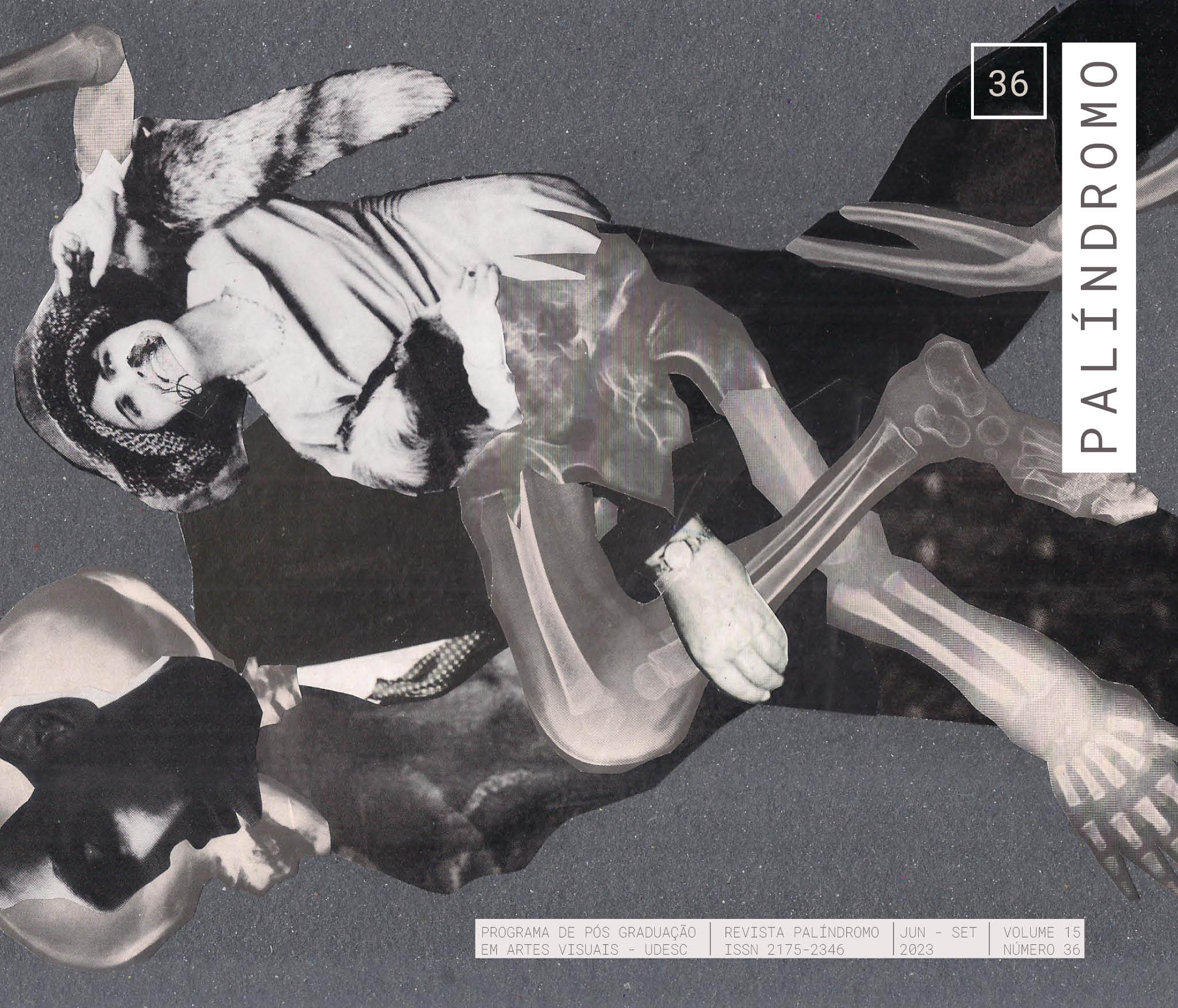A estética do grotesco na arte e narrativa de mangás
DOI:
https://doi.org/10.5965/2175234615362023e0009Parole chiave:
grotesco, quadrinhos japoneses (mangás), estéticaAbstract
O artigo destaca a importância do grotesco como recurso artístico e narrativo nas expressões da cultura dos quadrinhos japoneses, reconhecendo que o tema é multifacetado. Autores como Maruo Suehiro, Kago Shintarou, Hino Hideshi e Ito Junji são discutidos em relação a essa estética, que vem sendo explorada há décadas pelos quadrinistas japoneses, tanto na produção de mangás populares quanto em obras mais experimentais e underground. O artigo também explora as manifestações do grotesco em várias tendências estéticas, como o Ero-Guro (erótico-grotesco), mostrando como esses repertórios podem ser usados para expressar temas complexos e subversivos, como sexualidade, violência e crítica social.
Downloads
Riferimenti bibliografici
BANE, Theresa. Encyclopedia of Beasts and Monsters in Myth, Legend and Folklore. Jefferson, North Carolina: McFarland & Company, Inc., 2016.
BAKHTIN, Mikhail. Cultura popular na Idade Média e no Renascimento: o contexto de François Rabelais. São Paulo: Hucitec, 2010.
BATAILLE, GEORGE. O erotismo. Tradução Fernando Scheibe. Belo Horizonte: Autêntica Editora, 2017.
BUCKLEY, Sandra. The Encyclopedia of Contemporary Japanese Culture. London: Routledge, 2009.
CASTORIADIS, Cornelius. A instituição imaginária da sociedade. Tradução de Guy Reynaud. 5ª edição. Rio de Janeiro: Paz e Terra, 1982. p. 147).
DASGUPTA, Romit. Re-reading the Salaryman in Japan: Crafting Masculinities. 1. ed. Nova York: Routledge, 2013. DOI: https://doi.org/10.4324/9780203102084
DIDI-HUBERMAN, Georges. O que vemos, o que nos olha. São Paulo: Editora 34, 1998.
GRAVETT, Paul. Mangá: como o Japão reinventou os quadrinhos. São Paulo: Conrad, 2006.
GROENSTEEN, Thierry. Systéme de la bande dessinée. Paris: Presses Universitaries de Frances, 2006.
HINO, Hideshi. O Garoto Verme. Campinas, SP: Zarabatana Books, 2008.
ILHA KAIJUU. Nomes Japoneses e Imperialismo Cultural [vídeo online]. Canal YouTube Ilha Kaijuu, 2022. Disponível em: https://www.youtube.com/watch?v=Goop2BkGzH4. Acesso em: 15 mar. 2023.
ITO, Junji. Uzumaki: Deluxe Edition. San Francisco: Viz Media, 2013.
KAGO, Shintaro. Shishi Ruirui SHINTARO KAGO Artbook 1. ed. Tóquio: Shoen Shinsha, 2020.
KRISTEVA, Julia. Pouvoirs de l'horreur, essai sur l'abjection. Paris : Éd. du Seuil, 1980.
LINHART, Sepp. Rituality in the ken game. MARTINEZ, D. P.; VAN BREMEN, Jan (Orgs.). Ceremony and Ritual in Japan: Religious Practices in an Industrialized Society. London and NY: Taylor & Francis, 1995, p.21-66.
MARUO, Suehiro. Mr Arashi’s Amazing Freak Show. New York: Blast, 1992.
PALACIOS, Jesús; AGUILAR, Daniel; LARDÍN, Rubén. Ero-Guro: horror y erotismo en la cultura popular japonesa. Gijón, Satori Ediciones, 2018.
QUADRINHOS NA SARJETA. O mangá nojento de HIDESHI HINO e a filosofia do devir. Canal Quadrinhos na Sarjeta (YouTube), 31 out. 2021. Disponível em: https://www.youtube.com/watch?v=G9x6QseCS00. Último acesso em fevereiro de 2023.
QUADRINHOS NA SARJETA. Um Mangá Grotesco e o Pior Anime do Mundo: Midori Shōjo Tsubaki. [vídeo]. Canal Quadrinhos na Sarjeta (YouTube), 2022. Disponível em: https://www.youtube.com/watch?v=oHj6dRsmu9A. Acesso em: 07 mar. 2023.
SCHOELL, William. The Horror Comics: Fiends, Freaks and Fantastic Creatures, 1940s-1980s. 1. ed. Jefferson: McFarland & Company, 2014.
SHAIL, Robert; HOLLAND, Samantha; GERRARD, Steven (Org.). Gender and Contemporary Horror in Comics, Games and Transmedia. Abingdon: Routledge, 2019. DOI: https://doi.org/10.1108/9781787691070
TSUJI, K.; MÜLLER, S. C. Spirals and Vortices: In Culture, Nature, and Science. Cham: Springer International Publishing, 2019. DOI: https://doi.org/10.1007/978-3-030-05798-5
YUMENO, Kyûsaku. Shôjo Jigoku: o inferno das garotas. Tradução de Felipe Medeiros. Ilustrações de Daniél Silvestre. São Paulo: Urso, 2021.
Downloads
Pubblicato
Come citare
Fascicolo
Sezione
Licenza
Copyright (c) 2023 Márcio dos Santos Rodrigues

TQuesto lavoro è fornito con la licenza Creative Commons Attribuzione 4.0 Internazionale.
DECLARAÇÃO DE DIREITOS AUTORAIS
a. Os artigos publicados pela revista são de uso gratuito, destinados a aplicações acadêmicas e não comerciais. Todos os direitos autorais são atribuídos à revista. Os artigos cujos autores são identificados representam a expressão do ponto de vista de seus autores e não a posição oficial da Revista Palíndromo. O (s) autor (es) compromete-se sempre que publicar material referente ao artigo publicado no Palíndromo mencionar esta publicação da seguinte forma:
Este artigo foi publicado originalmente pela revista Palíndromo em seu volume (coloque o volume), número (coloque o número) no ano de (coloque o ano) e pode ser acessado em: http://www.revistas.udesc.br/index.php/palindromo
b. Plágio, em todas as suas formas, constitui um comportamento antiético de publicação e é inaceitável. A revista Palíndromo utiliza o software iThenticate de controle de similaridade


